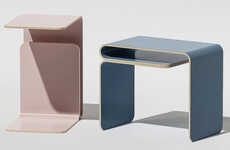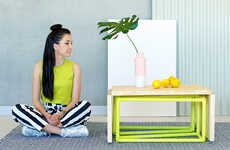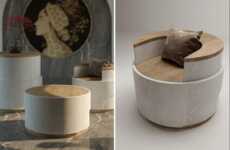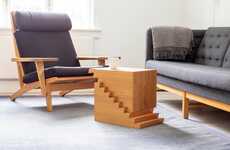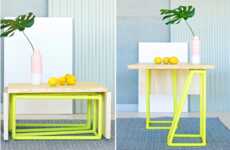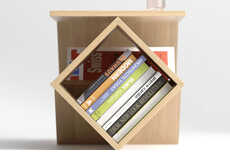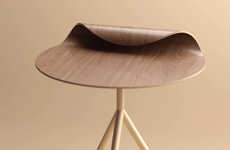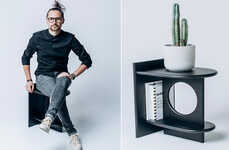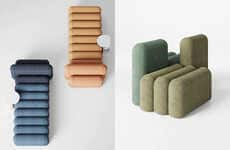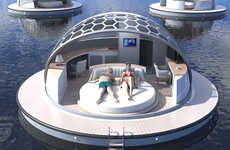
Reverse is a Conceptual Modular Side Table Designed to Save Space
Elena Rahman — April 14, 2022 — Art & Design
References: thestarslab & yankodesign
Reverse is a modular table designed to transform and save space in limited spatial areas. The table boasts a reversible design to open up the possibility of multifunctional furniture in the home. Users can switch the table's design from a coffee table to a side table, depending on their needs and spatial availability.
The conceptual design changes in height to accommodate various uses. In its coffee table format, the table is lowered to the ground, while its side table function is higher. Users can seamlessly switch between both settings seeing as all parts of the Reverse table are removable. In addition, the Reverse table is held together by screws designed like faucet handles for both functional and aesthetic purposes.
Image Credit: The Star Lab
The conceptual design changes in height to accommodate various uses. In its coffee table format, the table is lowered to the ground, while its side table function is higher. Users can seamlessly switch between both settings seeing as all parts of the Reverse table are removable. In addition, the Reverse table is held together by screws designed like faucet handles for both functional and aesthetic purposes.
Image Credit: The Star Lab
Trend Themes
1. Modular Furniture - Design customizable and adaptable furniture pieces that can transform to meet different user needs and save space.
2. Multifunctional Furniture - Create furniture pieces that serve multiple purposes and can adapt to different spatial contexts to maximize utility and minimize wasted space.
3. Innovative Joinery Techniques - Develop novel ways to join furniture pieces together that are both functional and aesthetically pleasing.
Industry Implications
1. Furniture Manufacturing - Manufacture customizable and adaptable furniture pieces that can transform to meet different user needs and save space.
2. Home Goods Retail - Feature multifunctional furniture pieces in retail stores that can serve multiple purposes and adapt to different spatial contexts to maximize utility and minimize wasted space.
3. Design and Architecture - Collaborate on developing innovative joinery techniques that can be used to create furniture pieces that are both functional and aesthetically pleasing.
5.6
Score
Popularity
Activity
Freshness

